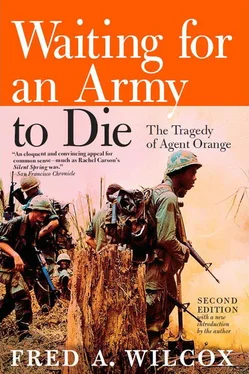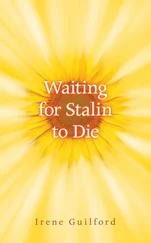ABOUT SEVEN STORIES PRESS
Seven Stories Press is an independent book publisher based in New York City. We publish works of the imagination by such writers as Nelson Algren, Russell Banks, Octavia E. Butler, Ani DiFranco, Assia Djebar, Ariel Dorfman, Coco Fusco, Barry Gifford, Hwang Sok-yong, Lee Stringer, and Kurt Vonnegut, to name a few, together with political titles by voices of conscience, including the Boston Women’s Health Collective, Noam Chomsky, Angela Y. Davis, Human Rights Watch, Derrick Jensen, Ralph Nader, Loretta Napoleoni, Gary Null, Project Censored, Barbara Seaman, Alice Walker, Gary Webb, and Howard Zinn, among many others. Seven Stories Press believes publishers have a special responsibility to defend free speech and human rights, and to celebrate the gifts of the human imagination, wherever we can. For additional information, visit www.sevenstories.com.
Copyright © 1989, 2011 by Fred A. Wilcox
First Seven Stories Press edition, August 2011
Second Edition
All rights reserved. No part of this book may be reproduced, stored in a retrieval system, or transmitted in any form or by any means, including mechanical, electric, photocopying, recording, or otherwise, without the prior written permission of the publisher.
Seven Stories Press
140 Watts Street
New York, NY 10013
www.sevenstories.com
College professors may order examination copies of Seven Stories Press titles for a free six-month trial period. To order, visit http://www.sevenstories.com/textbook or send a fax on school letterhead to (212) 226-1411.
Library of Congress Cataloging-in-Publication Data
Wilcox, Fred A.
Waiting for an army to die : the tragedy of Agent Orange / Fred A. Wilcox. — 1st Seven Stories ed.
p. cm.
eISBN: 978-1-60980-339-1
1. Veterans–Diseases–United States. 2. Agent Orange–War use. 3. Agent Orange–Toxicology. 4. Vietnam War, 1961-1975–Chemical warfare. I. Title. II. Title: Tragedy of Agent Orange.
UB369.W54 2011
363.17′91–dc23
2011023266
v3.1
According to Vietnam Veterans of America, “The General Accounting Office studied Marines in Northern I Corps from 1966 to 1969, and comparing troop placements with the records of where and when Agent Orange was sprayed, found that nearly 6,000 Marines were within one-third of a mile of the spraying of Agent Orange on the day of the spraying missions. Another 10,600 were within nine-tenths of a mile on the day of the spraying. The total equals 8 percent of all Marines in the area during the three years studied. The General Accounting Office study not only verifies that veterans were exposed, but strongly suggests that many more veterans were exposed than anyone had previously been able to prove” ( Vietnam Veterans of America Newsletter , March/April 1980).
Name withheld by request.
Between 1962 and 1970 approximately twelve hundred men served as pilots and grounds crew members with the US Air Force’s Operation Ranch Hand. Because many of these men were exposed to herbicides, either by handling barrels in which they were stored or from mists that blew into the cockpit and fuselage of the C-123s, the Air Force has commenced a study to determine if their health has been affected. According to Lieutenant Colonel Philip Brown (USAF) the study will continue through the year 2002 and will involve three phases. In the first phase the Air Force will examine the records of deceased Ranch Hand personnel to determine the cause of death. This, says Brown, will continue for the next twenty years. The second or “questionnaire phase” involves sending a representative from Lou Harris and Associates into each Ranch Hander’s home with a questionnaire in hand. “We’re interested in knowing what happened to them since Vietnam, what kind of offspring they’ve fathered, and we also ask the spouse about her experience so we can address the fertility or reproductive history of these people.” The third phase of the study involves asking former Ranch Handers to undergo a physical examination at the ’Kelsey-Seybold Clinic where, Brown says, they will undergo a thorough physical and neuropsychiatric examination.
“U.S. Cover-Up in Defoliant Suite Charged,” Newsday , February 18, 1982.
Years later Strait will learn that using army-issue purifying tablets to cleanse the water contaminated with dioxin is like trying to neutralize a vat of cyanide with an aspirin.
By the war’s end, Operation Ranch Hand had sprayed 1,933,699 pounds of arsenic on the Vietnamese countryside.
Puff the Magic Dragon: C-47 cargo plane equipped with three electric-powered Gatling machine guns.
According to Australian authors John Dux and P. J. Young, George Lugg suffered “what was described as a ‘breakdown’” in 1973. But a friend of Lugg’s, Mr. Geoffrey Foot, says that following the breakdown Lugg “became very irrational in his behavior and the government fobbed that off as psychiatric disorder, but it was certainly more than just a mental breakdown; it was a distinct physical breakdown in his appearance and everything.” Although Lugg was obviously exposed to herbicides over a period of time, no one is absolutely certain whether his physical and emotional collapse was caused by his exposure. “In his day he was a very brilliant man,” says his sister, Mrs. D. A. Hardy, “but at fifty he lost it all.”
Some scientists believe that dioxin attacks the enzyme system, lowering the body’s ability to fight infection and making the exposed individual more susceptible to disease. Experimental rhesus monkeys given minute quantities of dioxin develop rashes, lose weight, become listless and literally waste away in a matter of days or weeks, depending on the amount of dioxin they ingest.
For a copy of this memo, see Appendix, 191–194.
In 1980 the VA rescinded the requirement that veterans prove exposure when asking for information, assistance, or treatment for what they believed to be Agent Orange-related illnesses.
For the American Legion’s August 24–26, 1982, resolution no. 410 (Iowa), “The American Legion Policy on Agent Orange,” see Appendix, 197–199.
At the first “Defoliation Conference” sponsored by the Department of Defense and attended by several chemical companies (including Dow and Monsanto), General Fred J. Delmore, commanding general, US Army, Edgewood Arsenal, told the companies’ representatives that the DOD wanted to make sure that whatever it used for defoliants would be “perfectly innocuous to man and animals and at the same time will do the job.” Albert Hayward, chief of the program coordination office at Fort Detrick, told the conference that “it goes without saying that the materials must be applicable by ground and air spray, that they must be logistically feasible, and that they must be nontoxic to humans and livestock in the area affected.” In a 1964 press release, Dow asserted that its 2,4,5-T was absolutely nontoxic to humans or animals, but by 1965 the company confirmed that it contained TCDD. Dow also admitted that it had not informed the USDA or the DOD that it had discovered 2,4,5-T to be contaminated with TCDD.
Although the class action suit has been filed on behalf of all veterans who served in Vietnam, the number of veterans who were listed as sick or dying at the time of the interview was approximately forty thousand. More veterans will undoubtedly be added to this list in the future.
Читать дальше











